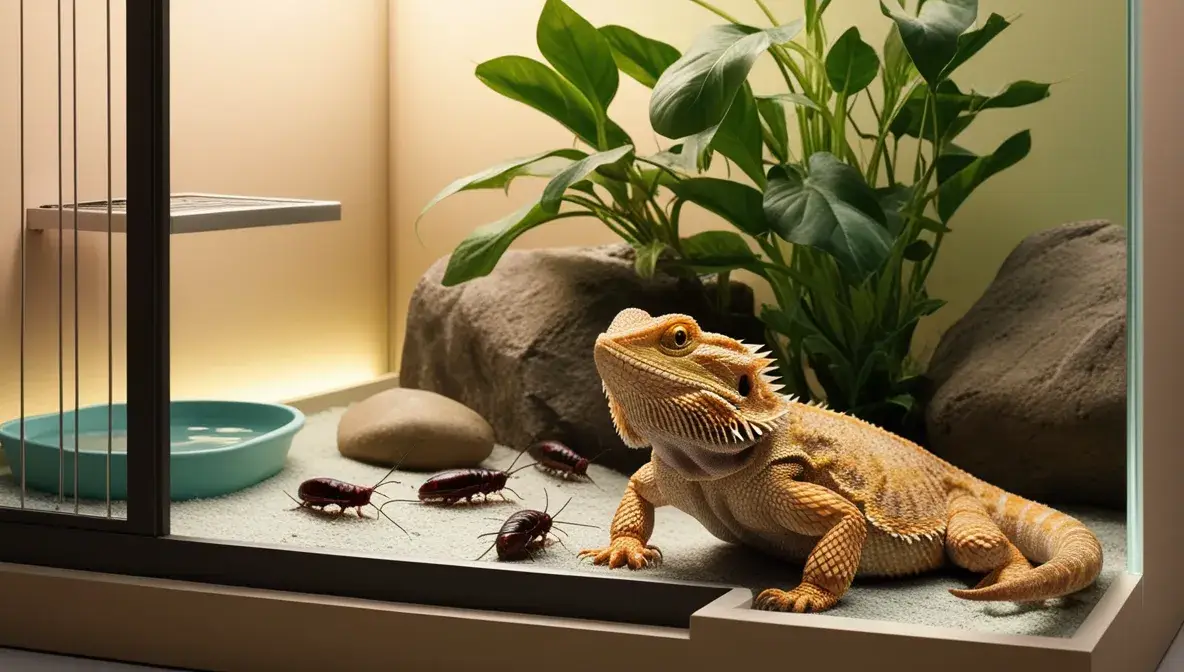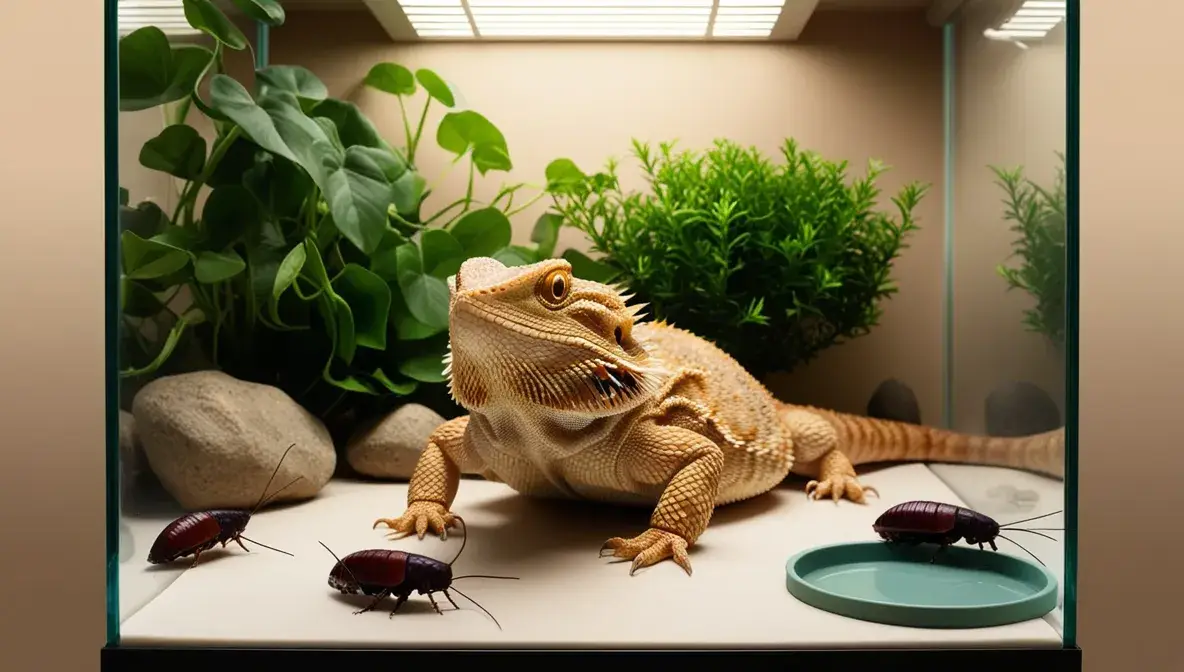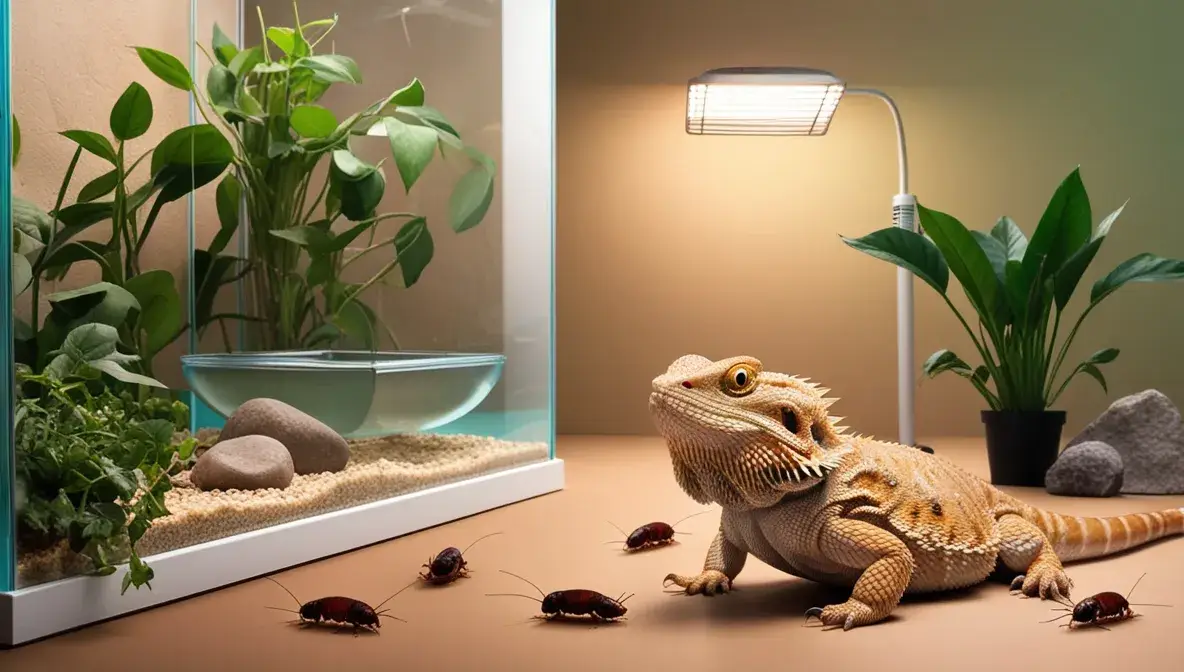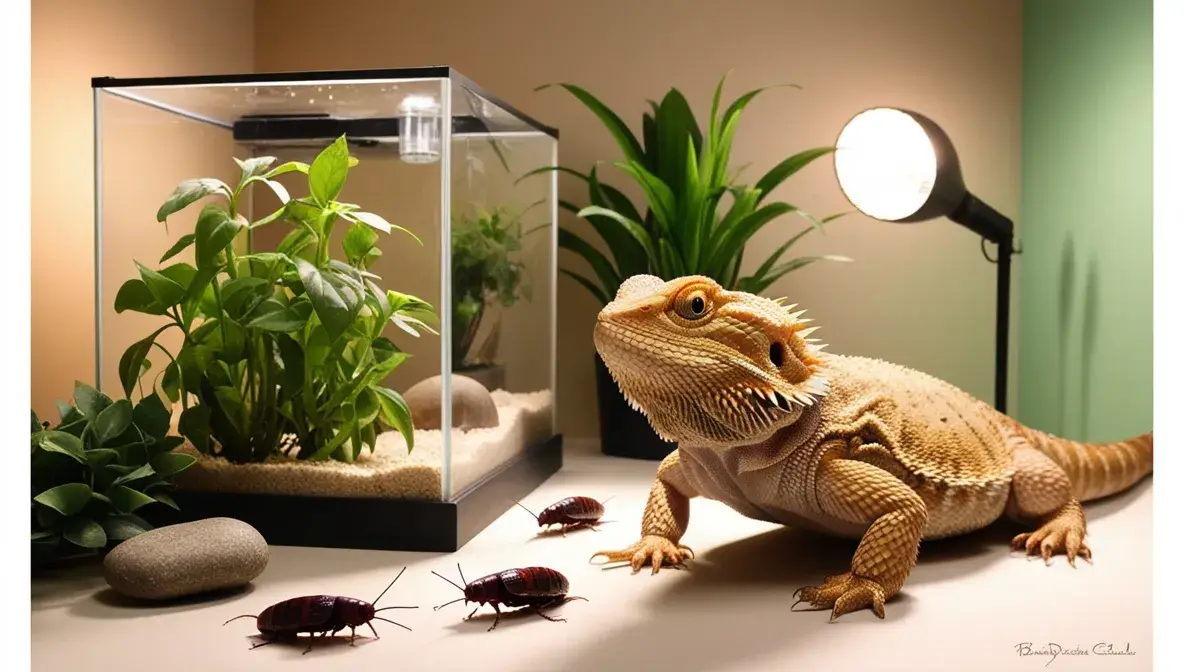If you’re a bearded dragon owner, you’ve likely wondered: Can you leave Dubia roaches in a bearded dragon tank? While Dubia roaches are one of the most popular feeders for reptiles due to their high nutritional value and ease of care, leaving them in the tank for extended periods can raise important questions about your pet’s health and safety.
This guide will explore whether it’s safe or beneficial to leave Dubia roaches in your bearded dragon’s enclosure, the potential risks involved, and best practices for feeding. Whether you’re a new reptile enthusiast or an experienced owner, understanding these factors is essential for ensuring your dragon’s health and happiness.
Why Dubia Roaches Are a Popular Feeder Choice

Dubia roaches (Blaptica dubia) are an excellent feeder insect for bearded dragons due to their high protein content, balanced calcium-to-phosphorus ratio, and low fat. Unlike crickets, they’re quiet, odorless, and less likely to escape. They’re also more nutritious than other feeder insects like mealworms or waxworms, making them a staple in reptile diets.
But while they’re a great food source, does that mean you can leave them in your bearded dragon’s tank? Let’s break it down.
Risks of Leaving Dubia Roaches in a Bearded Dragon Tank
Leaving Dubia roaches in your bearded dragon’s tank for extended periods can pose several risks. While they’re generally safe and non-aggressive, there are factors to consider:
Stress to Your Bearded Dragon
Bearded dragons are natural hunters and may feel stressed if roaches are constantly roaming their tank. If your dragon isn’t hungry or doesn’t eat the roaches immediately, the insects may become a source of irritation, disrupting your pet’s sense of calm.
Quick Tip: Always monitor your dragon’s behavior after feeding. If they seem agitated or restless, remove uneaten roaches promptly.
Roaches Hiding in the Tank
Dubia roaches are excellent at hiding, especially in the substrate or decor in your dragon’s enclosure. Once they burrow or find a crevice, they can be difficult to retrieve. This can lead to:
- Roaches surviving for long periods in the tank.
- Potential contamination of the enclosure if the roaches defecate or die.
Consider using a feeding dish or removing decor during feeding sessions to prevent hiding.
Hygiene and Bacterial Risks
Dubia roaches are clean insects, but if left in the tank too long, they can contribute to unsanitary conditions. Uneaten roaches may defecate, carry food particles, or die, which can lead to bacterial growth in the enclosure.
Regular cleaning of your dragon’s tank is essential, especially if feeders are left inside for extended periods.
Feeding Schedule Disruption
Leaving roaches in the tank may encourage irregular feeding habits. Bearded dragons thrive on consistent feeding schedules, and free-roaming insects can disrupt this pattern.
Best Practices for Feeding Dubia Roaches

To ensure your bearded dragon stays healthy and your feeding sessions are efficient, follow these tips when feeding Dubia roaches:
Feed Only the Right Amount
Bearded dragons should eat the number of Dubia roaches appropriate for their size and age. Here’s a quick guide:
- Baby dragons (0–3 months): 20–40 small roaches per day, split into 3–5 feedings.
- Juvenile dragons (3–12 months): 10–20 medium roaches per day, split into 2–3 feedings.
- Adult dragons (12+ months): 5–10 large roaches every other day.
By feeding only what your dragon can consume in one session, you eliminate the need to leave roaches in the tank.
Use a Feeding Dish
A smooth-sided feeding dish can contain the roaches and prevent them from hiding in the tank. This makes it easier to monitor how much your dragon eats and remove uneaten insects.
Monitor Feeding Sessions
Always stay present during feeding. This allows you to:
- Ensure your dragon eats the roaches before they hide.
- Remove any uneaten insects promptly.
Gut-Load Your Roaches
Gut-loading involves feeding your Dubia roaches nutrient-rich foods (like fresh vegetables) 24–48 hours before offering them to your dragon. This enhances their nutritional value.
Do Dubia Roaches Bite or Harm Bearded Dragons?

One common concern is whether Dubia roaches can harm bearded dragons if left in the tank. The good news is that Dubia roaches are non-aggressive and don’t bite or attack reptiles. Unlike crickets, which can nibble on a dragon’s sensitive areas, Dubia roaches are safe to handle and leave temporarily in the enclosure.
However, it’s still best to remove uneaten roaches after feeding to maintain a clean and stress-free environment.
Alternatives to Leaving Roaches in the Tank
If you’re unable to monitor feeding sessions, consider these alternatives:
- Pre-Portioned Feedings: Place the exact number of roaches your dragon needs in their tank during mealtime.
- Separate Feeding Bin: Use a designated feeding container to offer roaches. This prevents them from hiding in the main enclosure.
- Timed Feedings: Schedule feeding times when you’re available to supervise.
These methods ensure your dragon gets the nutrition they need without the risks associated with leaving roaches in the tank.
Frequently Asked Questions
Can Dubia Roaches Survive in a Bearded Dragon Tank?
Yes, Dubia roaches can survive for days in a bearded dragon tank if they find hiding spots and access to food or moisture.
How Long Can You Leave Roaches in the Tank?
It’s best to remove uneaten roaches within 15–30 minutes of feeding. This prevents stress, hygiene issues, and disruptions to your dragon’s routine.
How Do I Prevent Roaches from Hiding?
Use a feeding dish or temporarily remove tank decor during feeding sessions.
Conclusion
So, can you leave Dubia roaches in a bearded dragon tank? While Dubia roaches are a safe and nutritious feeder option, leaving them in the enclosure for extended periods can lead to stress, hygiene issues, and feeding schedule disruptions. By following proper feeding practices—such as offering the right amount, using a feeding dish, and monitoring sessions—you can ensure your dragon stays healthy and happy.
For more expert tips on Dubia roaches and reptile care, explore our latest articles at Dubia Roaches Guidez. Share your experiences in the comments below—how do you manage feeding time for your bearded dragon?
This blog post is designed to help you make informed decisions about feeding your bearded dragon while maintaining optimal care for both your pet and their feeders.

Mark Manson is an expert blogger specializing in Dubia Roaches. He shares practical care tips, breeding insights, and feeding advice to help enthusiasts and reptile owners thrive.

